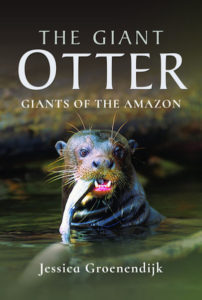 At last count, there are thirteen living species of otter on the planet. Many of us will no doubt be already familiar with the charismatically playful North American River Otter (Lontra canadensis), the wide-ranging Eurasian Otter (Lutra lutra), and dangerously adorable Sea Otter (Enhydra lutris). However of all thirteen, the largest – as well as one of the most in danger of someday lowering the total species count to twelve – is the enormous and very appropriately named Giant River Otter (Pteronura brasiliensis).
At last count, there are thirteen living species of otter on the planet. Many of us will no doubt be already familiar with the charismatically playful North American River Otter (Lontra canadensis), the wide-ranging Eurasian Otter (Lutra lutra), and dangerously adorable Sea Otter (Enhydra lutris). However of all thirteen, the largest – as well as one of the most in danger of someday lowering the total species count to twelve – is the enormous and very appropriately named Giant River Otter (Pteronura brasiliensis).
Measuring in length up to the hight an average human is tall, these highly social semi-aquatic denizens of north central South America continue to hang on despite a loss of perhaps as much as 80% of their original range. Despite the threat of fur hunting, which had nearly pushed them over the edge of the existential cliff, now having been illegal for decades, they still haven’t quite recovered as one would hope they would.
Fortunately, these water-loving “river wolves” have a friend in biologist Jessica Groenendijk – a friend who is more than happy and superbly skilled in recounting their tale and making their lives as well as their present plight better known to the wider public. In her recently published The Giant Otter; Giants of the Amazon, she takes her readers into the world of these fascinating creatures, explaining their close-knit family structures, their top-level carnivore hunting behaviors, and many of the other traits that make them both crucial members of their ecosystem as well as an overwhelming favorite species with eco-tourists.
